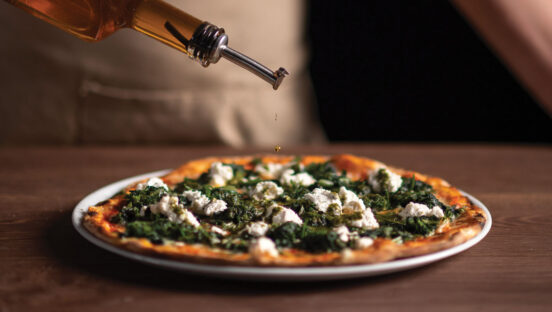Your customers are already members of at least three or four loyalty programs tied to, say, the local grocery store, office supply chain store and pharmacy. Offering a program with rewards and discounts from your pizzeria would likely be welcomed with open arms. However, printing out a business card and purchasing a fancy hole puncher isn’t going to cut it anymore.
Colloquy, a Cincinnati-based provider of loyalty publications, education and research, reports that, since its first loyalty census in 2000, the number of loyalty memberships in the United States has more than doubled, from 973 million to 2.09 billion, with the number of programs per household growing from 12 to 18. That’s the good news. The bad news is that less than half of the total memberships (8.4 per household) are actually active. Why are less than half of them being used? Look at it from the customer’s perspective. Think about how many loyalty programs you belong to and how they are structured. What sort of rewards do you receive, and how are they redeemed? How often do you hear from the merchants? And, most importantly, when was the last time they made you feel like an appreciated member of their program?
Beginning to see the picture?
Let’s look at the eight most important steps in running a successful loyalty program, and why you’ll need to implement them if you want to build a bevy of happy members. If at the end you decide that you aren’t ready to begin a loyalty program, many of these same tips can still assist in getting you in the right mindset for other customer engagement projects that will prepare your customers for a loyalty program down the line.
1. Check Your Budget
Loyalty programs can be one of the best ways to build brand awareness and customer loyalty, but you’ll also need to figure in the costs of setup, product rewards, accounting fees, possible software or computer upgrades, and any additional staff you may need to hire. Most importantly, calculate the amount of time that it will take to market and promote the program properly.
2. Find Out What They Want
Many retailers neglect to ask what customers want from a reward program. Do they favor discounts? Freebies? Exclusive invitations to store events? The short answer is that they want relevant rewards that are tailored to them. The only way you’ll know for sure, however, is by asking them—either during the sign-up process or through email and social marketing polls.
3. Put It In Writing—and Make It Easy!
No one wants to read five pages of small print to figure out how many points they just earned from the pizza they purchased. They also don’t want to spend a year gathering points that go toward a mysterious goal or possibly nothing at all. Find a happy medium by laying it out for customers from the start. Explain it clearly, and make it as simple as possible.
4. Know Your Members
One of the reasons so many stores have transitioned away from punch cards over the years is because you will never know anything about a customer who carries a punch card. More current technologies give you the ability to gather important information about your customers up front and on an ongoing basis. In return, this data will help you with future sales, promotions and even remembering your guests’ most-ordered menu items. The ability to monitor customer purchases through a software-based loyalty program yields information that is simply priceless.
5. Stay in Touch
All too often, loyalty cards end up in a desk drawer or the bottom of an old purse. In order for a loyalty program to succeed, it’s imperative to follow up with your members. Whether that means through periodic emails, mobile alerts or a note dropped in the mailbox, your customers need to be reminded why they are being loyal to you and not the pizzeria down the street.
6. Keep the Perks Coming
If you want people to eat at your pizzeria and not at your competitors’, offer regular bonuses and perks to your VIP customers. Have a new menu debuting in a couple of weeks? Reveal it to loyalty members before everyone else. They’ll love the exclusivity of the preview.
7. Take It Mobile
The ability to tie a loyalty membership number to a mobile phone not only dramatically increases consumer participation in a loyalty program; it also enhances the data that is collected about the consumer. A mobile phone allows you to gather extra data in addition to information about what the consumer does at the register. With a loyalty program that’s tied into a mobile phone, the consumer also has constant access to the loyalty program, benefiting you and them.
8. Stand Out!
With more than two billion loyalty memberships in the United States, how will yours stand out from the competition? Will you reveal secret specials to members or invite them to share what they’ve earned through social media for the chance to earn more rewards? Making members feel special and valued will show them that loyalty is a two-way street at your pizzeria—one that they’ll want to return to again and again.















